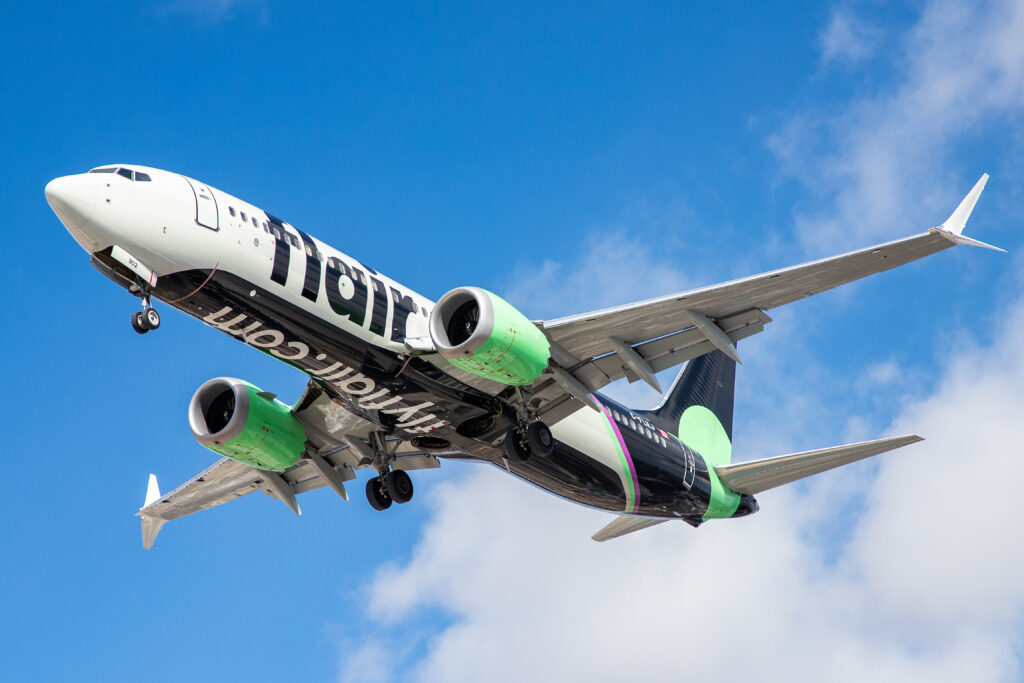Estimated reading time 6 minutes, 48 seconds.
During a media event on March 7, Flair Airlines president and CEO Stephen Jones shared that the airline is setting up for success this summer following travel chaos with Canadian carriers during the summer of 2022, and also confirmed that Flair is focusing on sun destinations with its winter 2023 schedule – as well as increased frequencies.
Jones told reporters that he believes Flair, as well as other airlines and airports across Canada, “took a lot of learnings out of last summer. . . . I think we’ll be in a lot better shape in the year ahead than we were last year.
“I think the level of experience that’s inherent in the workforces has increased because, if you think about last summer being one of the first out of Covid, there were still a lot of new people in the airline ecosystem that didn’t have that level of experience,” he added. “[However,] summer is always a test for the whole system because you’ve got 95 to 100 percent full aircraft; it’s a really busy time.”

In addition to adding 13 new domestic routes this summer, Flair announced five new winter markets, including Calgary (YYC) to Las Vegas (LAS) and Phoenix (PHX); Ottawa (YOW) to Las Vegas; and Toronto (YYZ) and Kitchener-Waterloo (YKF) to Puerto Vallarta (PVR). The ultra-low-cost carrier (ULCC) is also increasing winter 2023 frequencies on 18 domestic routes, 15 transborder routes, and nine international routes.
Flair chief commercial officer, Garth Lund, noted that this is Flair’s largest winter schedule yet, with “32 percent more seats than last year.”
To support these growth plans, Jones confirmed that Flair is adding an additional six 737 Max aircraft to its fleet in time for the summer. Those six aircraft will join Flair’s existing fleet of 19 737 Max 8 planes, and three 737-800s. The new planes are to be leased from a variety of lessors, as is the case with the rest of Flair’s fleet. While Jones did not specify where all six of the new aircraft will be based, he did note that one of the aircraft will join two existing 737s that are based at YKF.
The plan to add six aircraft between the period of March to mid-June 2023 has been reduced from Flair’s previous plan to add eight aircraft in that time period. Jones said this decision reflected “aircraft availability, our view of the market, and pilot availability.”
Of course, the airline is still going to be looking to hire more pilots and crew to support the incoming aircraft and increased frequencies. However, a labor shortage is an issue that other Canadian carriers have been dealing with for a lengthy period. Airlines like WestJet and Sunwing have recently announced route suspensions and cancelations as a result of “operational constraints.”
Jones said pilot and flight attendant hiring at Flair is on pace. He noted that prior to the 2022 holiday season, the airline concluded an agreement with its pilots via the union helper (the Air Line Pilots Association), which led to “some significant salary increases for pilots. We think with the new contract, we’ve got a great package to continue attracting pilots to Flair as we grow.”
However, the personnel shortage isn’t limited to pilots. The labor force within airports — which includes workers like baggage handlers and passenger check-in officers — is experiencing high turnover rates. Moreover, there is a need to fill aircraft maintenance engineer jobs.
“It’s less spoken about,” noted Jones, “but there’s a really high demand for qualified aircraft mechanics at the moment.”
As Flair moves forward and navigates these challenges, the airline intends to stick with its current business model — which is keeping costs low to be able to offer low fares to travelers.
Jones touted the fact that in 2022, Flair saw a 300 percent increase in passengers over 2019, while at the same time lowering its fares by eight percent. In contrast, legacy carriers like Air Canada and WestJet carried 30 percent and 40 percent fewer passengers in 2022, respectively, but increased fares by 18 percent and nine percent, respectively — according to data from aviation analytics provider Cirium.
Flair says it saved Canadians $256 million on travel in 2022.
“The core message here is: get your fares lower; people are going to travel more,” said Jones.
As for Flair’s other competition — like new ULCC Lynx Air and new leisure carrier Canada Jetlines — Jones said the two airlines are “significantly smaller than Flair” at the moment.
“I think we stimulated a bunch of market share and got people traveling more often,” he added. “A really big part of our philosophy is to stimulate travel through having affordable fares. . . . Lynx has a very similar business model to us, and so it’s likely that they’ve got that same mix of stimulation and market share shift.”








